This article was medically reviewed by Jennifer Boidy, RN. Jennifer Boidy is a Registered Nurse in Maryland. She received her Associate of Science in Nursing from Carroll Community College in 2012.
There are 9 references cited in this article, which can be found at the bottom of the page.
This article has been viewed 78,831 times.
Although rinsing with mouthwash has not been scientifically proven to prevent colds, many people feel that it helps ease symptoms of colds and sore throats. The common cold is caused by a virus, not a bacteria.[1] However, sometimes a sore throat may be caused by a bacteria, such as strep, and in these situations it is crucial to start taking an antibiotic right away.[2] Rinsing with an antiseptic mouthwash regularly is a good habit for your oral health, so you might consider including it in your daily routine for this reason. Rinsing with mouthwash may also help to temporarily relieve certain cold symptoms, such as a sore throat. You can also make a homemade mouthwash with salt and warm water, which may help to prevent and shorten your cold symptoms.[3]
Steps
Rinsing with Antiseptic Mouthwash
-
1Measure the amount of mouthwash recommended by the manufacturer and pour into a clean cup. Typically, the recommended amount is 4 teaspoons (20mL).[4] However, make sure that you check the label of your mouthwash before measuring.
- Do not swig mouthwash directly from the bottle, especially if you are feeling sick. There is no way of knowing if you have taken the correct dosage. If you do have a bacteria or virus, drinking directly from the bottle could transmit your infection to others who may use the same bottle of mouthwash.
-
2Swish the mouthwash in your mouth for 30 to 60 seconds. Swish vigorously to get the mouthwash in all parts of your mouth. Gargle the mouthwash in the back of your mouth, too.[5]Advertisement
-
3Spit the mouthwash out. Do not swallow the mouthwash. Swallowing small amounts mouthwash could cause nausea and even diarrhea. Swallowing large amounts could be toxic.
- If you or someone you know swallows a large amount of mouthwash, keep the product label handy and call the Poison Control Hotline: 1-800-222-1222.
-
4Rinse your mouth twice a day, or as recommended by the product label. Do not use mouthwash more frequently than the product label recommends. Most manufactures recommend that you use mouthwash only twice a day.
-
5Do not give mouthwash to children under the age of 6.[6] Young children are more likely to accidentally swallow mouthwash, which can pose serious health risks.
Rinsing with a Homemade Saline Mouthwash
-
1Prepare a saline solution. Mix one cup of warm water with ½ to ¾ teaspoon of salt. Use warm water to better dissolve the salt and to soothe your throat. Test the water on the underside of your wrist to make sure it is not too hot to use for gargling.
-
2Swish the saline mouthwash around your mouth for 30 to 60 seconds, or up to 3 minutes. Gargle the solution in the back of your mouth, too. The saltwater helps to break up mucus in your throat and draws excess liquid from your throat tissue that may be causing inflammation.[7]
-
3Spit the saline solution out, along with any mucus that is loosened from gargling. It’s okay if you accidentally swallow some of the saltwater, as it will give you no bad side effects.[8] However, it’s better to spit it out, along with the mucus that it loosens, to rid your body of any of the bacteria or virus cells that it has accumulated.
-
4Repeat as often as necessary. If you have a lot of mucus built up in your throat, gargle with the saltwater solution repeatedly until you’ve expelled as much of the mucus as possible. Otherwise, repeat at least 3 times a day until your cold symptoms subside.
Warnings
- Do not swallow store-bought antiseptic mouthwash. If you or someone you know has swallowed a large quantity of mouthwash, call the Poison Control Hotline: 1-800-222-1222.⧼thumbs_response⧽
- If your symptoms persist or worsen, you may need to see a doctor. If you experience any of the following symptoms, seek professional medical help: trouble breathing or chest pain, a fever of over 100.5 that persists for more than a day or two, persistent vomiting, significant pain when swallowing, persistent cough, persistent congestion and/or headache.[10]⧼thumbs_response⧽
References
- ↑ http://www.mayoclinic.org/diseases-conditions/common-cold/home/ovc-20199807
- ↑ http://www.webmd.com/oral-health/tc/strep-throat-topic-overview#1
- ↑ http://www.nytimes.com/2010/09/28/health/28real.html?_r=5
- ↑ http://www.colgateprofessional.com/products/colgate-total-mouthwash/information
- ↑ https://www.webmd.com/oral-health/features/mouth-rinse-rules#1
- ↑ http://www.yourdentistryguide.com/oral-rinses-for-children/
- ↑ http://www.nytimes.com/2010/09/28/health/28real.html?_r=5
- ↑ http://www.webmd.com/cold-and-flu/features/does-gargling-wlth-salt-water-ease-a-sore-throat
- ↑ http://www.webmd.com/cold-and-flu/features/does-gargling-wlth-salt-water-ease-a-sore-throat#1
About This Article
While mouthwash can’t get rid of your cold, it can help alleviate the symptoms so you can find some relief. To use antiseptic mouthwash when you have a cold, first measure out the recommended amount of mouthwash specified on the product label, which is generally 4 teaspoons, so you can take the correct dosage. Remember to use a clean cup so you don’t transfer your virus to the bottle itself. Once you have the proper amount of mouthwash, swish it around your mouth for 30 to 60 seconds. Gargle with the mouthwash too so you can clean the back of your mouth as well. After the time is up, spit out the mouthwash since swallowing it can make you sick. You should repeat this rinsing twice a day, or as much as the label on your mouthwash recommends. For more help from our Medical co-author, including how to rinse with a homemade saline mouthwash, read on!





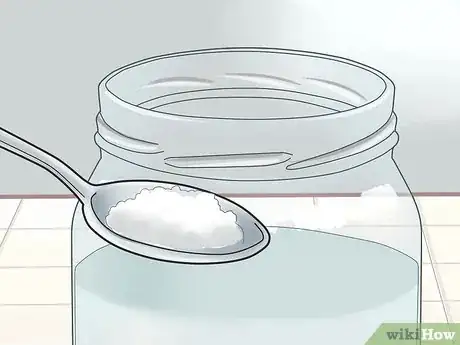





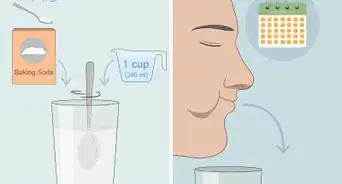
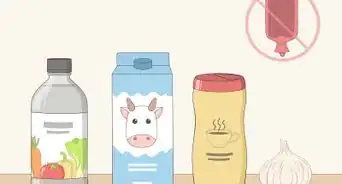
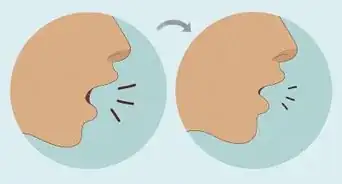





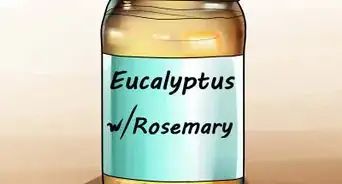
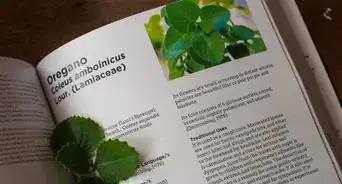
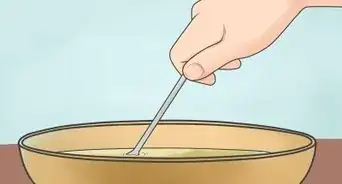















































Medical Disclaimer
The content of this article is not intended to be a substitute for professional medical advice, examination, diagnosis, or treatment. You should always contact your doctor or other qualified healthcare professional before starting, changing, or stopping any kind of health treatment.
Read More...